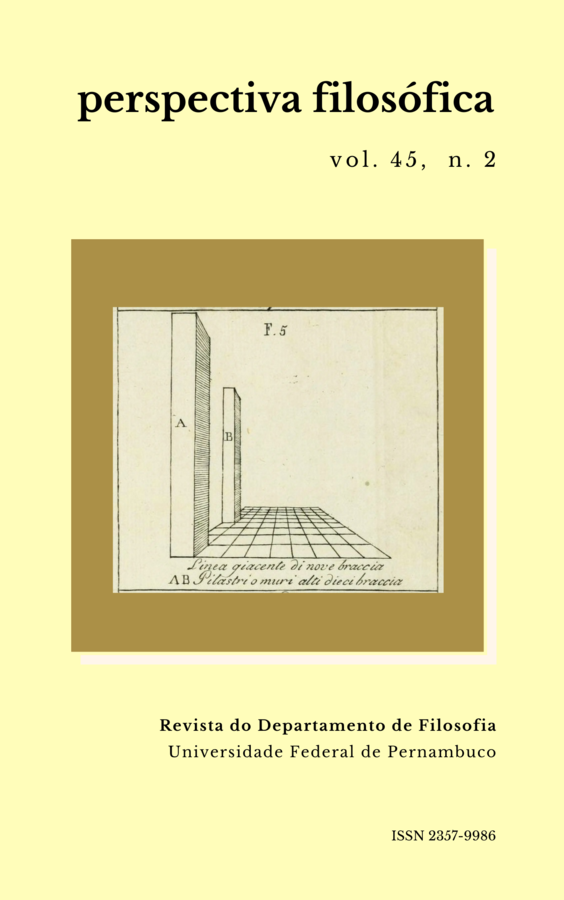On collaborative reference and the roles of the interlocutor
DOI:
https://doi.org/10.51359/2357-9986.2018.246763Keywords:
speaker reference, assertion, conversation, collaborationAbstract
In this work, I explore the idea that collaboration is required for the completion of acts of referring by asserting propositional content. This claim is supported by an empirical framework first proponed by HH Clark and his coauthors in the late 1980s, but currently under development by researchers in areas such as sociology, linguistics and psychology. I intend to show that, in what concerns philosophical investigations focused on speaker reference, we have reason to suppose that speaker reference is also audience-directed, as suggested by Kent Bach in a recent work. Consequently, we need a nonidealized theory of assertions compatible with the empirical observations of how dyadic spontaneous conversations work. For that, I focus on a critique of Stalnaker’s theory of assertion and offer ways to overcome the difficulties it brings up, defending a collaborative view of assertion-making and acts of referring.References
AUSTIN, J. L.How to do things with words. Oxford university press, 1975.
AUSTIN, J. L.Philosophical papers, Oxford University Press, 1979.
BACH, K. On referring and not referring.Reference: Interdisciplinaryperspectives, Ed. Jeanette Gundel and Nancy Hedberg. Oxford: Oxford U,p. 13-58, 2008.
CLARK, H. H.; SCHAEFER, E. F. “Dealing with overhearers.”Arenas oflanguage use, pp. 248-297, 1992.
CLARK, H. H.; WILKES-GIBBS, D. “Referring as a collaborativeprocess.”Cognition, vol. 22, no 1, pp. 1-39, 1986.
DREW, P. “‘Open’ Class Repair Initiators in Response to SequentialSources of Trouble in Conversation.” Journal of Pragmatics vol. 28, pp. 69–101, 1997.
GLUCKSBERG, S.; KRAUSS, R.M.; HIGGINS, E.T. “The development ofreferential communication skills”. In F.E. Horowitz (Ed.), Review of childdevelopment research. Vol. 4, pp. 305-345, Chicago: University of ChicagoPress, 1975.
GOODWIN, C. Conversational organization: Interaction between speakersand hearers. New York: Academic Press, 1981.
GRICE, H. P. William James Lectures. Harvard University, pp. 41-58, 1967.
JEFFERSON, G. “A case of precision timing in ordinary conversation”.Semiotica, vol. 9, pp. 47-96, 1973.
KITZINGER, C. “Repair.” In SIDNELL, J. & STIVERS, T. (eds) TheHandbook of Conversation Analysis. John Wiley & Sons, Ltd, pp. 229–56,2013.
KORTA, K; PERRY, J.Critical pragmatics: An inquiry into reference andcommunication. Cambridge University Press, 2010.
LERNER, G. H. “On the Place of Linguistic Resources in the Organizationof Talk-in-Interaction: Grammar as Action in Prompting a Speaker toElaborate.” Research on Language & Social Interaction vol. 37 (2), pp. 151–84, 2004. doi:10.1207/ s15327973rlsi3702_3.
RUSSELL, B. “On Denoting”, Mind, vol. 14, pp. 479–493, 1905.
STALNAKER, R. C. ‘Presuppositions’, Journal of PhilosophicalLogic, vol.2, pp. 447-457, 1973.
STALNAKER, R. C. ‘Pragmatic Presuppositions’, in Milton K. Munitz andPeter K. Unger (eds.), Semantics and Philosophy, New York UniversityPress, New York, 1974.
STALNAKER, R. C.Assertion. Blackwell Publishers Ltd, 1978
STALNAKER, R. C.Context and content: Essays on intentionality inspeech and thought., 1999.
STALNAKER, R. C. “Common Ground’, Linguistics and Philosophy vol.25, n.5-6, pp. 701-721, 2002.
STRAWSON, P. F. “On referring”, Mind, vol. 9, pp. 320–44, 1950.
STRAWSON, P. F. “A Reply to Mr. Sellars”, Philosophical Review, vol. 63,pp. 216–231, 1954.
STRAWSON, P. F. “Identifying reference and truth‐values.”Theoriavol.30,n. 2, pp. 96-118, 1964.
Downloads
Published
Issue
Section
License
A Revista Perspectiva Filosófica orienta seus procedimentos de gestão de artigos conforme as diretrizes básicas formuladas pelo Conselho Nacional de Desenvolvimento Científico e Tecnológico (CNPq). http://www.cnpq.br/web/guest/diretrizesAutores que publicam nesta revista concordam com os seguintes termos:
Os autores mantém os direitos autorais e concedem à revista o direito de primeira publicação, sendo o trabalho simultaneamente licenciado sob https://creativecommons.org/licenses/by/4.0/deed.pt_BR que permite o compartilhamento do trabalho com reconhecimento da autoria e publicação inicial nesta revista.
Os autores têm autorização para assumir contratos adicionais separadamente, para distribuição não-exclusiva da versão do trabalho publicada nesta revista, com reconhecimento de autoria e publicação inicial nesta revista (Consultar http://opcit.eprints.org/oacitation-biblio.html).

Esta revista está licenciada com uma Licença Creative Commons Atribuição 4.0 Internacional.













